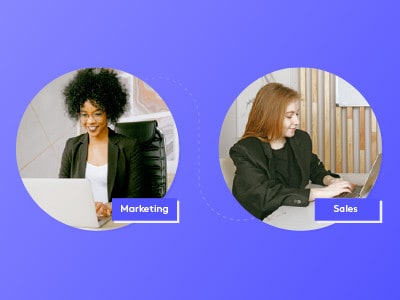
The Buyer is Always the Main Character in the B2B Sales Story
Is the traditional way of doing B2B sales and marketing obsolete?
You may have seen the recent articles and blog posts. You’ve likely seen the social commentary shared across LinkedIn. Everyone has a hot take on how the traditional B2B sales model has died, changed, morphed, or remains relevant – alive and kicking. Two recent articles, from folks whom I admire deeply, are making the rounds here at PathFactory. The first is “Traditional B2B Sales and Marketing Are Becoming Obsolete” posted on The Harvard Business Review by Brent Adamson, Vice President at Gartner. The second is a direct response blog post, “Traditional B2B Sales is Dead, Long Live the UCE?” by Dave Kellogg, advisor, director, consultant, angel investor, and blogger focused on Enterprise software startups.
Brent Adamson builds a strong case for the elimination of the traditional go-to-market team model (sales, marketing, customer success, and support) in favor of a UCE, or Unified Commercial Engine. The second article is Dave Kellogg’s position on the former as he posts that alignment between marketing and sales is enough without the need for regionally-based pods supporting the customer journey.
So, How did we get here?
In the past few years, three big trends have shaped B2B companies:
- Revenue as a job title. The trending move to incorporate a revenue-focused position into companies has helped further align sales and marketing. Whether the title is Chief Revenue Officer or VP of Revenue (or a related title), there’s a need to bring a ruthless focus on pipeline growth, revenue measurement, and GTM alignment which requires data from marketing, sales, and customer success to be effective. There has been a myriad of information on revenue operations for years, prompting the increasing popularity of this role at B2B companies of all sizes.
- Product-led growth (PLG) has exploded. According to research from SnapApp and Heinz Marketing, around 82% of B2B buying committees now include at least one Millennial employee. Millennial buyers are influencing the shift to a consumerized approach to B2B experiences. At the same time, SaaS companies are recognizing that to thrive in today’s crowded market, a PLG strategy to acquire and grow a customer base is also necessary. Companies can shorten sales cycles by having prospects onboard and educate themselves.
- Everyone has pivoted to an ABM/ABX strategy. Account-based marketing has taken a front seat to former traditional nurture stream-only methods. Just look at the explosive growth of ABX-focused companies such as 6sense, Demandbase, and PathFactory. It’s pretty obvious this is the current preferred marketing and selling approach. And, it makes sense, too, because it’s better for both the buyer and the seller. The sellers can get very granular about who their buyer is, requiring detailed knowledge on the ideal customer profile (ICP) as well as the buyer personas, use cases, and challenges you’re solving for, and the buyer is served a much more targeted experience when researching potential vendors and solutions. This method can work extremely well when sales and marketing are aligned on the targeted accounts.
A key outcome of these trends is that sales and marketing have become much more aligned and in sync. Marketing no longer generates a lead and throws it over the proverbial wall to sales without context – that’s not going to generate revenue and make the company successful.
While both articles make great points, we align closer to Dave Kellogg’s view of the B2B world. Our reason? The buyer.
Seller beware—the buyer has done their homework
Since buyers only spend 17% of their time interacting with vendors, it’s important to ensure the limited time that sales has to convince the buyer count. We do this by ensuring that the experience that led the buyer completely through the funnel to this stage carries over into the final interaction with sales. PathFactory for Revenue Enablement ensures a seamless journey by providing sales with the buying signals they need to understand what was researched, consumed, and shared by the prospect or account, and then makes it easy for a sales rep to customize and package up additional content (generated or approved by marketing) tailored to a unique buyer or account.
Visitor data + content data = a better personalized experience
Revenue teams can now scale how they connect content to buyers by combining PathFactory’s Content Intelligence with intent signals and segments from our ABM partners, 6sense and Demandbase, to easily serve up personalized content experiences. These customized experiences can be shared directly from Salesforce, Eloqua, and Marketo as well as through sales engagement platforms such as Outreach or Salesloft. It’s not about revenue intelligence or providing a 360 degree view of your revenue, it’s about using Content Intelligence to surface how to have the most meaningful conversations with your most interested buyers.
Just because the buyer is the hero doesn’t mean sales is the villain
What Dave Kellogg said is true: buyers have more information, options, and control in today’s buying cycles and companies need to work together across their entire go-to-market team to acknowledge and address this. In addition, leveraging the right solutions that engage the buyer and enable sales is like giving your team a super power. Context is key and with marketing and sales working side-by-side, the buyer will hopefully have an easy decision to make.
